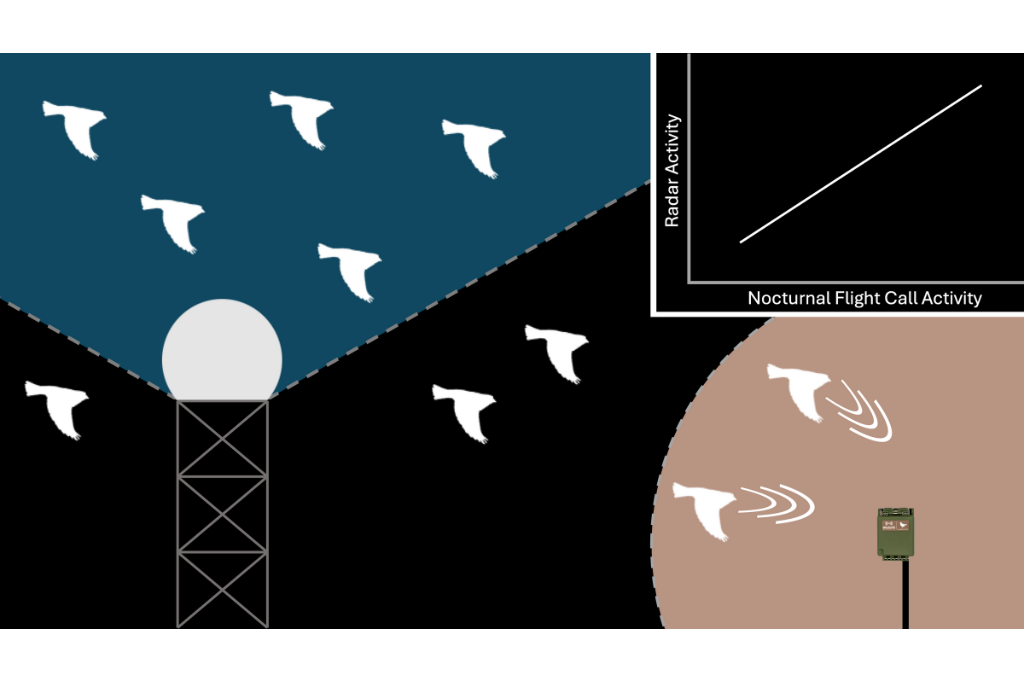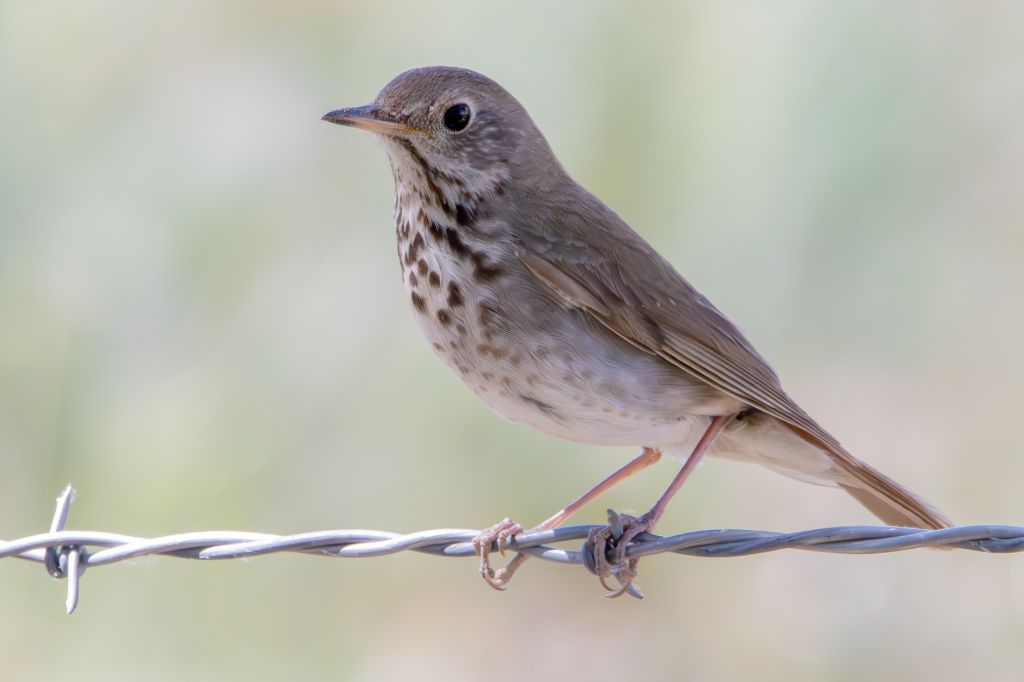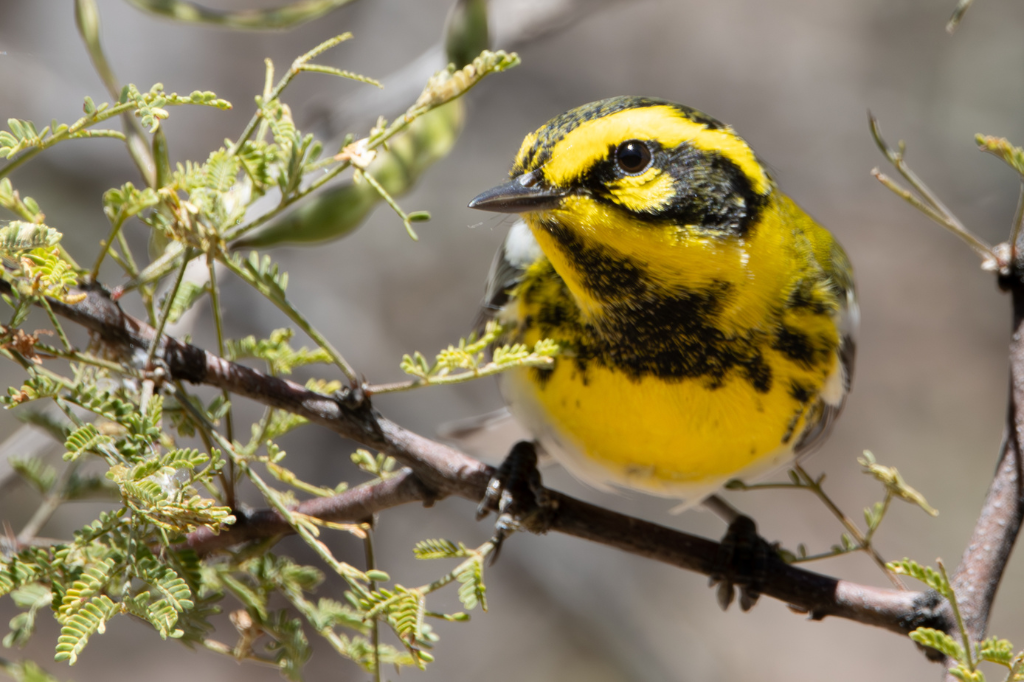By Dylan M. Osterhaus
Related Paper: Evaluation of methods to estimate nocturnal bird migration activity: A comparison of radar and nocturnal flight call monitoring in the American West by Dylan M. Osterhaus, Benjamin M. Van Doren, Kyle G. Horton, Fitsum Abadi, Timothy F. Wright, Martha J. Desmond, Ornithological Applications
How to describe something we cannot see? This challenge defines nocturnal bird migration research. Every spring and fall, millions of birds fly through the night, journeying between wintering and breeding grounds. Yet, because this mass movement happens under the cover of darkness, it has historically been difficult to observe. While daytime observations of changing bird species or numbers from day-to-day hint at migration, they do not tell the full story. Thankfully, modern technology now offers a clearer view and allows us to “see” what is happening under the cover of darkness.

Today, researchers use weather radar and nocturnal flight call monitoring to study nocturnal bird migration. The same radars that track weather systems can also quantify the number of birds in flight. In addition, they can tell us how fast and at what height birds are flying, and in which direction they are moving. However, radar cannot tell us which species of birds are flying overhead. Nevertheless, many birds make vocalizations during their nocturnal flight and these calls can be identified using automated classification tools. Therefore, nocturnal flight call monitoring using autonomous recorders can inform us about the species moving overhead. Consequently, sampling nocturnal migration concurrently using radar along with nocturnal flight call monitoring can offer a nearly comprehensive view of these historically unobservable movements. The information we can derive from these tools provides powerful insights with broad conservation and research potential, especially as we progress toward continental-scale monitoring.
As the use of these methods increases and expands into new regions, it is also important that our understanding of how these methods sample migration increases. However, most of our understanding comes from studies in eastern North America. Western North America, where the density of birds in migration is lower and the species are different than in the East, remains less explored. For example, thrushes dominate flight calls in the East, but are rare in the West, where species like Setophaga townsendi (Townsend’s Warbler) are common. It’s also unclear how regional differences, such as weather, topography, and the migrant community itself impact the effectiveness of these methods. In our study, “Evaluation of methods to estimate nocturnal bird migration activity: Comparison of radar and nocturnal flight call monitoring in the American West” (published in Ornithological Applications), we used a large dataset of nocturnal flight call recordings and weather radar scans to compare how these methods sample migration in western North America.
For this project, we collected tens of thousands of hours of acoustic recordings and thousands of weather radar scans. While methods to process weather radar and quantify migration activity from these data are well developed at this point, analyzing large acoustic datasets and detecting nocturnal flight calls within them is still an emerging field. That is why we formed a collaboration at the early stages of our project with researchers at the Cornell Lab of Ornithology and the University of Illinois, who were developing an advanced nocturnal flight call detection and classification program called Nighthawk. Our collaboration was mutually beneficial, resulting in improved performance in detecting and classifying flight calls from the American West, and allowing for accurate and efficient analysis of our recordings.
Our findings showed that estimates of migration activity from weather radar and nocturnal flight call monitoring correlate well across nights of a migration season, but not within nights, similar to patterns seen in the American East. We also determined that variables, such as cloud cover, moon illumination, tailwind, and the speed of migrants in flight caused variability in the correlation between methods. Interestingly, we found variability between our acoustic recording locations in how they sample migration, possibly indicating that local-scale variables may impact nocturnal avian migrant behavior.

This study highlights how technological advances enable large-scale flight call data collection, and demonstrates that methods to sample nocturnal bird migration are robust to geographic differences between eastern and western North America. Using accessible recorders and open-source tools, we built one of the largest nocturnal flight call datasets to date. Our work underscores the potential for flight call monitoring to complement radar studies, offering a holistic view of bird migration at the continental scale.

Great work on improving our understanding of tools for observing migration and shedding more light on an understudied migration system!
I am so glad to see some attention on Western birds! It is great to see these monitoring tools used in concert!
thanks AOS
I’m learning more new information about birds.